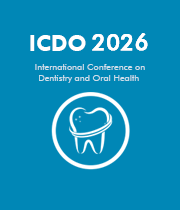Title: Direct resin restoration with addition of diatomite in anterior teeth - Case report
Abstract:
The evolution of restorative materials, the relentless search for dental aesthetics and the need for immediate results by patients, leads dentists to apply increasingly sophisticated techniques and accessible to all pockets. As a result, there was an increase in the aesthetic demand in dentistry, the search for better quality and durability of composite resin restorations. The Zirconfill resin has a differentiated material, diatomite1 . Diatomite is a mineral raw material of sedimentary and biogenic origin, constituted from the accumulation of diatom algae shells that have been fossilized, since the Precambrian period, by the deposit of silica on its structure. The fixation of this silica by diatomaceous algae is related to the geochemical cycle of clay decomposition, serving as part of the structural material for these algae2 Zirconfill is classified as a nano-hybrid, in its composition it has the same monomers as Filtek Z250, in addition to mixed zirconia and silica oxide particles that give the resin a characteristic thixotropism. According to the manufacturer, Zirconfil presents an excellent polymerization contraction index; high mechanical resistance; superior degree of conversion of monomers; excellent workability and surface smoothness; excellent optical characteristics and superior mimicry3 . The diatomite particles, because they are porous, allow the monomer to percolate, aiming to improve its properties, which makes this resin differentiated4 The case is of a 29-year-old female patient, who expressed the desire to rehabilitate her smile in a short time, as she would be married in 15 days but would like to do so in an economical and most conservative way possible without using the dental appliance. Clinically, conoid lateral incisor teeth and canine to canine diastemas are observed. In the present clinical case, as a young patient, we opted for a conservative treatment, using direct restorations in composite resin to improve the function and aesthetics of your smile.




